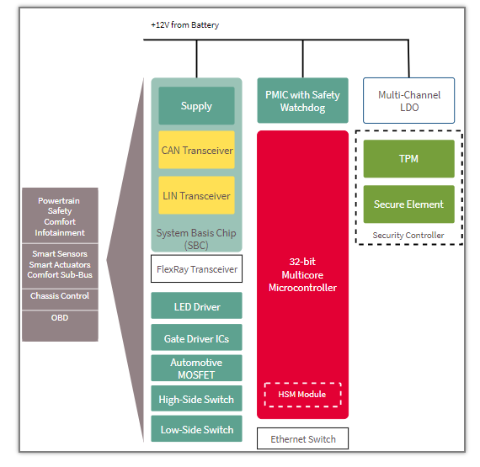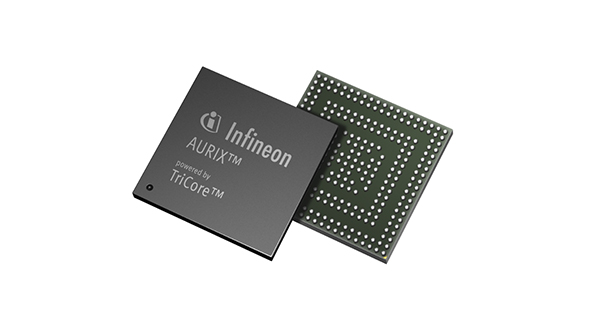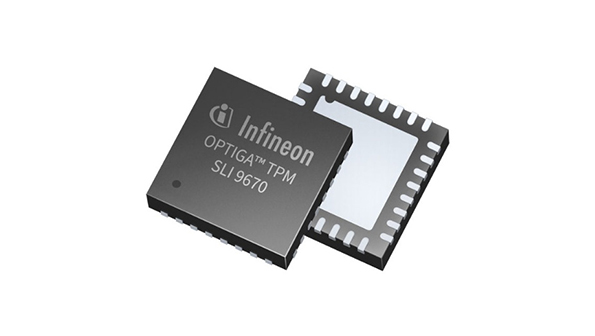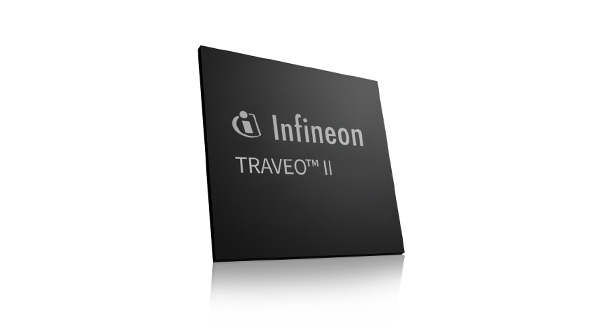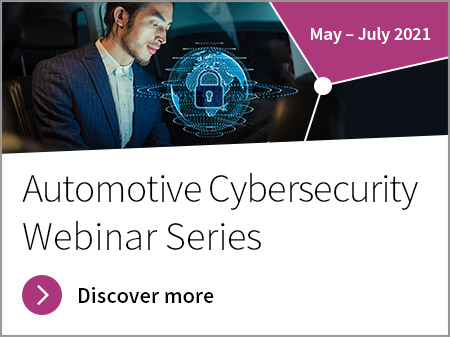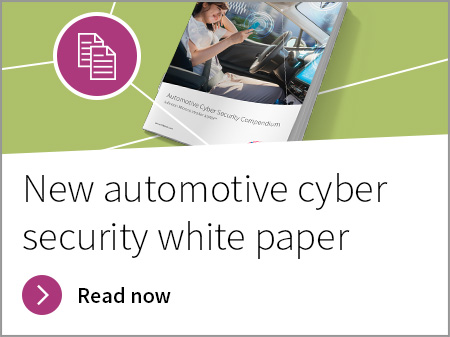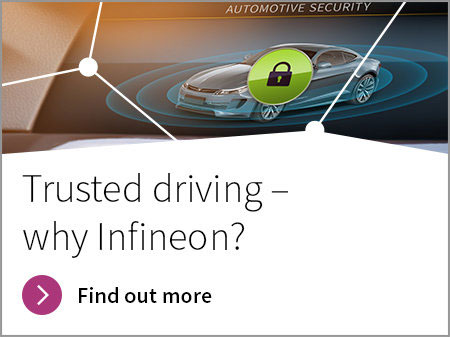Automotive gateway
Performance and security for today’s automotive connected gateways
High-performance and secure central automotive gateway solutions address the demands of connected cars. Our broad portfolio of solutions includes AURIX™ microcontrollers that offer a balance of performance and security, TRAVEO™ T2G devices that enable fast communication with advanced security features, and OPTIGA™ TPMs that enhance protection against attacks and is trusted by leading vehicle manufacturers.
Enhanced performance and security with Infineon's vehicle gateway solutions
When designing central gateway applications for cars, the two biggest success factors are performance and security.
As the central hub for internal and external communications, today's automotive connected gateways must deliver significantly higher processing power and data throughput than their predecessors. At the same time, connected gateways play an indispensable role in protecting the vehicle from cyber-attacks, and in enabling new IoT services like car sharing, software updates over the air (SOTA), and predictive maintenance. Infineon's automotive gateway solutions address both of these challenges successfully.
Automotive gateway with robust and cutting-edge performance to meet design challenges
With Infineon's solutions for connected gateways in cars, designers no longer need to compromise between performance and security.
Our AURIX™ family of automotive microcontrollers strikes a perfect balance, offering cutting-edge performance along with robust and scalable cybersecurity.
For faster in-car communication and enhanced security, our TRAVEO™ T2G devices are designed with features like dedicated Arm® Cortex®-M0+ for secure processing, embedded flash in dual bank mode for firmware over the air (FOTA) requirements, and the introduction of hardware security modules (HSM).
To further strengthen the security of the vehicle's electronic architecture against various attacks, our OPTIGA™ TPM security controller can be combined with AURIX™ or TRAVEO™ microcontrollers and any application processor. This combination provides additional protection against observative, semi-invasive, manipulative, and other malicious activities. Leading vehicle manufacturers have chosen OPTIGA™ TPM as their preferred security solution for connected cars. It reinforces the security measures and ensures the safety of their vehicles and the data they process.
System Diagram: Connected Gateway
The power supply subsystem feeds power to the processors, communication interfaces, and various circuits on the PCB. Depending on the overall current consumption and connectivity requirements, this subsystem can be realized using integrated solutions (System Basis Chips, SBCs) or discrete components. The processor subsystem consists of a single microcontroller, multiple microcontrollers, or a microcontroller/microprocessor combination depending on overall system partitioning and performance requirements. Regardless of the partitioning, the AURIX™ automotive microcontroller as a gateway provides the necessary physical isolation and protocol translation to safely route messages between the different functional domains. The security subsystem consists of two main components: AURIX™ and Traveo™ with their embedded Hardware Security Module (EVITA HSM full version) for real-time security-critical use cases and the OPTIGA™ TPM security controller to harden the entire E/E architecture more effectively while also enabling new use cases.
ExcelonTM F-RAM™, like any other nonvolatile memory technology, is subject to physical degradation that can eventually lead to device failure if not addressed appropriately. F-RAM write/read endurance and data retention are the two end-of-life (EoL) parameters to specify its reliability and performance in a system. Learn more about the F-RAM data retention performance at various operating temperatures and find a method and guidance to accurately calculate the system’s EoL based on its operating temperature profile. Check the application note.
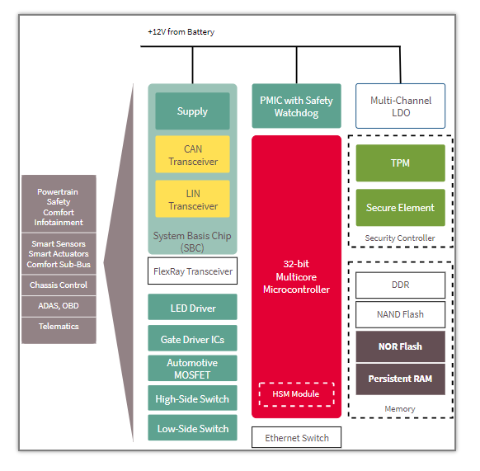
Slightly optimizes system costs, both hardware (some reduction in wire harness, size, space, weight) and software, without high development effort as new functionalities (ADAS, Telematics, etc.) emerge to make space in the vehicle for them. Drawback; PCB, module, and EMC design challenges as more power and logic functions are merged.
With Semper NOR Flash Memory Infineon provides the newest high-performance, safe, and reliable NOR Flash memory solution. Semper NOR integrates critical safety features and is the industry's first ASIL-B compliant and ASIL-D-ready NOR Flash memory.
| NOR Flash Memory |
F-RAM for Automotive markets provides fast writes at full interface speed. F-RAM does not have any write delays and data is instantly nonvolatile. Traditional nonvolatile memories have delays of 5 or more milliseconds before data becomes nonvolatile. If power is disrupted, pending data is lost unless the system has extra capacitance or batteries to keep the system on until data is stored.
F-RAM offers virtually unlimited endurance of 100 trillion read/write cycles. Traditional nonvolatile memories typically have less than 1 million cycle endurance, forcing system designers to use complex wear-leveling routines and up to 4x more density to prolong the lifetime of these memories.

In this training, you will understand:
- How hackers use the CAN bus to interfere with in-vehicle communication
- To be aware of how Infineon’s AURIX™ microcontrollers support secure CAN communication
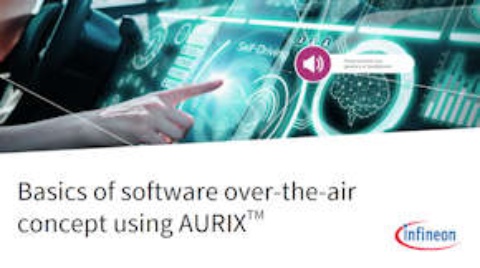
Training topics:
- Get to know why systems require frequent updates, how this is done and how automotive systems try to ensure their security when they are updated
- Learn how AURIX™ families of microcontrollers support over-the-air software updates
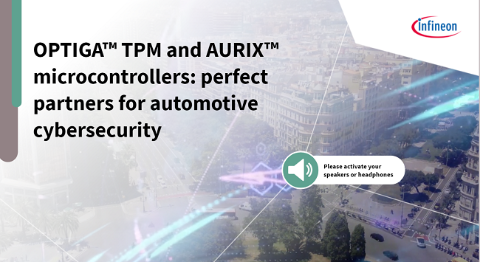
Description:
- Identify common security threats to modern cars
- Understand how OPTIGA™ TPM can help automotive systems achieve a high level of security and their applications in different use cases in various host environments
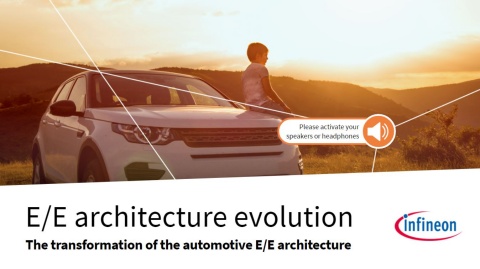
Description:
- Explain how the major automotive trends are shaping the evolution of electrical and electronic or E/E architectures in cars
- Identify the trending E/E architecture concepts and their impact on networking technologies and recognize the solutions that Infineon provides to support current and future E/E architectures
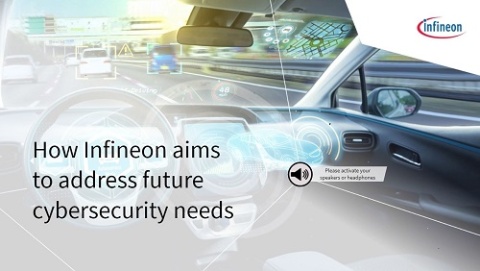
Description:
- Categorize cybersecurity threats in the upcoming automotive electrical and electronic architecture
- Identify how Infineon’s next-generation AURIX™ TC4x microcontrollers are able to mitigate cybersecurity threats
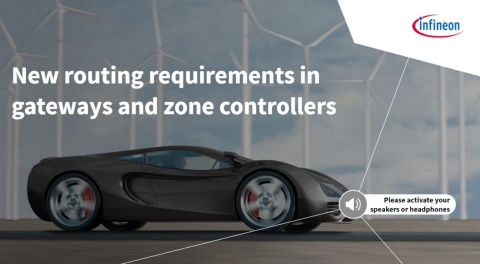
Description:
- The automotive industry is in constant motion.
- Every day, new technologies are developed and introduced in modern vehicles.
- The need for safety, security and new functionnalities is ever increasing and previously established automotive Electric and Electronic architectures fail to uphold new needs in terms of data throughput, latency and data processing.

